We left the safe harbor in Chicago on Monday morning, pulling out of the 31st Street Marina early to get a jump on the long day ahead of us. To get to the Illinois River, which leads to the Mississippi, from Chicago, boaters have 2 choices: boats with a vertical clearance of less than 17'2" can take the scenic route through downtown Chicago. If greater than 17'2" (which Rickshaw is), the only other choice is the Calumet River, which meanders through the industrial (and not so attractive) South Chicago. So after leaving the breakwater of the marina, we turned the boat south towards the Calumet River, and started passing under the many bridges and through the several locks. Over the next few days, we continued motoring 333 miles in a generally southwest direction toward the confluence of the Illinois River with the Mississippi.
On the Illinois, we were back to having to deal with locks, but, this time, instead of small, quaint, pleasure boat locks, we were transitting large (100 ft wide X 600 ft long) commercial locks along with tows pushing barges down& up the river. Although we had only 8 locks on the Illinois between Lake Michigan and Grafton, Illinois, a good part of our time was spent hovering in place in front of the locks, waiting for the tows & their barges to clear the locks. Being commercial, the tows usually take a higher priority than the pleasure boaters. At some locks, we had to wait 2 hours in order to be called up by the lockmaster and being given permission to lock through. Some of the tows were pushing more barges than one lock chamber would hold at a time, so, in those cases, the tow would push the first group of barges into the lock, disconnect the front half from the back half of the barges, and pull the back half out of the lock chamber. Then after the water level in the lock chamber was adjusted (up or down) to equal the river level on the far side of the lock, a giant winch and cable would pull the barges out of the lock, the far gates would close allowing the water level to be adjusted back, so that the tow and the remaining barges could enter the lock and rejoin with the front half of the barge raft and continue on their delivery trip. Which kind of explains why it can take so long for a tow with several barges to transit a lock.
The Illinois River also introduced us to another new "adventure", Asian carp. This invasive species, which can grow to up to 100 lbs, is slowly taking over the river, eating everything in the river, and slowly destroying the ecosystem of the river. To
combat this threat and to prevent its migration into the Great Lakes, the Corps of Engineers has electrified a a 300 yard section of the river that all boats must pass through. Although there are no effects to the boats themselves, there are several signs along this stretch of the river issuing severe warnings about touching the water as we went through this particular section. As boats move down the river, especially in shallow water, these fish can get excited and leap out of the water several feet. If the sides of the boat are low enough, they can actually leap into the boat, leaving a slimy, bloody mess. At one point in the river, we saw a bass boat with the name "Peoria Carp Hunters" on the side. The sides of the boat had netting (like on the sides of trampolines), to protect the occupants from getting hit by the flying fish. As we passed by the boat, we noticed that 2 of the people were putting on football helmets and getting into a small dinghy being towed by the bass boat. Each of the helmetted "customers" had fishing nets so that when the bass boat accelerated its motor, the customers in the towed dinghy could attempt to snatch the jumping carp out of the air with the nets. What fun! Had we not been in a hurry, we might have tried it out.
The drought of 2012 has lowered the water level in the rivers by a foot or so making some of the normal anchorages and marinas too shallow for Rickshaw. This means that we have fewer choices for parking the boat at night, and sometimes we have to go more miles that we would normally want to in a single day.
During the trip between Lake Michigan and the Mississippi River, we stopped at the free downtown wall at Joliet, a great marina, Heritage Harbor, in Ottawa, IL, then onto Peoria. With the oncoming change of the seasons from summer to fall, we've had to stop every other day when a new weather front moves through, making our trip south much longer than we had hoped.
After staying in Peoria for 2 nights due to a strong weather front that moved through the state, we left the Peoria city docks on Saturday morning, heading to the next possible stop in Beardstown. Several years ago, the city docks in Beardstown were wiped out, and an enterprising tug boat captain started allowing boaters to tie up to his very rough work barge, which was covered with a wide variety of iron cranes, pulleys, ropes, cables, welders, boat parts, etc.
The final day was one of the longest days of the trip (88 miles) due to the lack of stopover stops on the river. So we departed from the barge at first light and motored down the final leg of the river to the very lively town of Grafton, IL, at the point where the Illinois River flows into the Mississippi.
On the Illinois, we were back to having to deal with locks, but, this time, instead of small, quaint, pleasure boat locks, we were transitting large (100 ft wide X 600 ft long) commercial locks along with tows pushing barges down& up the river. Although we had only 8 locks on the Illinois between Lake Michigan and Grafton, Illinois, a good part of our time was spent hovering in place in front of the locks, waiting for the tows & their barges to clear the locks. Being commercial, the tows usually take a higher priority than the pleasure boaters. At some locks, we had to wait 2 hours in order to be called up by the lockmaster and being given permission to lock through. Some of the tows were pushing more barges than one lock chamber would hold at a time, so, in those cases, the tow would push the first group of barges into the lock, disconnect the front half from the back half of the barges, and pull the back half out of the lock chamber. Then after the water level in the lock chamber was adjusted (up or down) to equal the river level on the far side of the lock, a giant winch and cable would pull the barges out of the lock, the far gates would close allowing the water level to be adjusted back, so that the tow and the remaining barges could enter the lock and rejoin with the front half of the barge raft and continue on their delivery trip. Which kind of explains why it can take so long for a tow with several barges to transit a lock.
The Illinois River also introduced us to another new "adventure", Asian carp. This invasive species, which can grow to up to 100 lbs, is slowly taking over the river, eating everything in the river, and slowly destroying the ecosystem of the river. To
combat this threat and to prevent its migration into the Great Lakes, the Corps of Engineers has electrified a a 300 yard section of the river that all boats must pass through. Although there are no effects to the boats themselves, there are several signs along this stretch of the river issuing severe warnings about touching the water as we went through this particular section. As boats move down the river, especially in shallow water, these fish can get excited and leap out of the water several feet. If the sides of the boat are low enough, they can actually leap into the boat, leaving a slimy, bloody mess. At one point in the river, we saw a bass boat with the name "Peoria Carp Hunters" on the side. The sides of the boat had netting (like on the sides of trampolines), to protect the occupants from getting hit by the flying fish. As we passed by the boat, we noticed that 2 of the people were putting on football helmets and getting into a small dinghy being towed by the bass boat. Each of the helmetted "customers" had fishing nets so that when the bass boat accelerated its motor, the customers in the towed dinghy could attempt to snatch the jumping carp out of the air with the nets. What fun! Had we not been in a hurry, we might have tried it out.
The drought of 2012 has lowered the water level in the rivers by a foot or so making some of the normal anchorages and marinas too shallow for Rickshaw. This means that we have fewer choices for parking the boat at night, and sometimes we have to go more miles that we would normally want to in a single day.
During the trip between Lake Michigan and the Mississippi River, we stopped at the free downtown wall at Joliet, a great marina, Heritage Harbor, in Ottawa, IL, then onto Peoria. With the oncoming change of the seasons from summer to fall, we've had to stop every other day when a new weather front moves through, making our trip south much longer than we had hoped.
After staying in Peoria for 2 nights due to a strong weather front that moved through the state, we left the Peoria city docks on Saturday morning, heading to the next possible stop in Beardstown. Several years ago, the city docks in Beardstown were wiped out, and an enterprising tug boat captain started allowing boaters to tie up to his very rough work barge, which was covered with a wide variety of iron cranes, pulleys, ropes, cables, welders, boat parts, etc.
The final day was one of the longest days of the trip (88 miles) due to the lack of stopover stops on the river. So we departed from the barge at first light and motored down the final leg of the river to the very lively town of Grafton, IL, at the point where the Illinois River flows into the Mississippi.
| | |
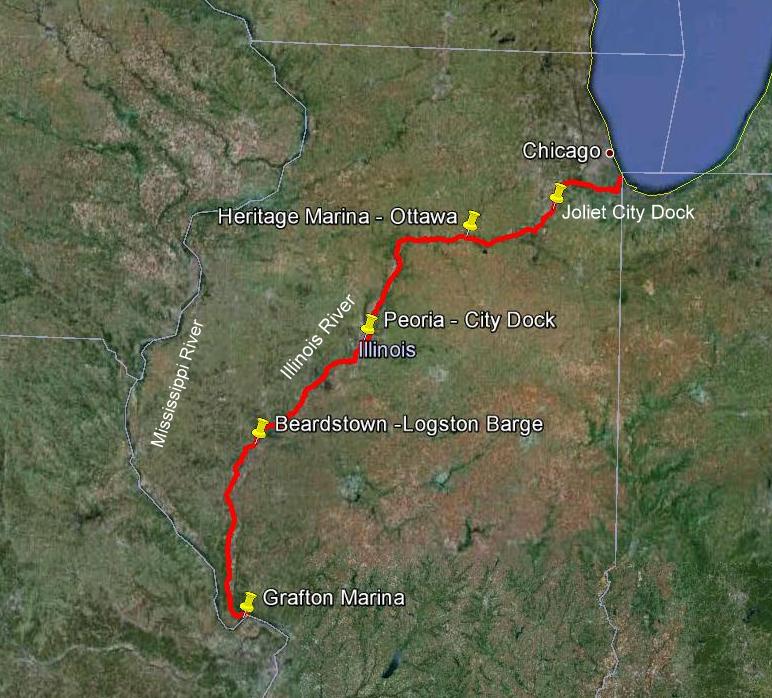
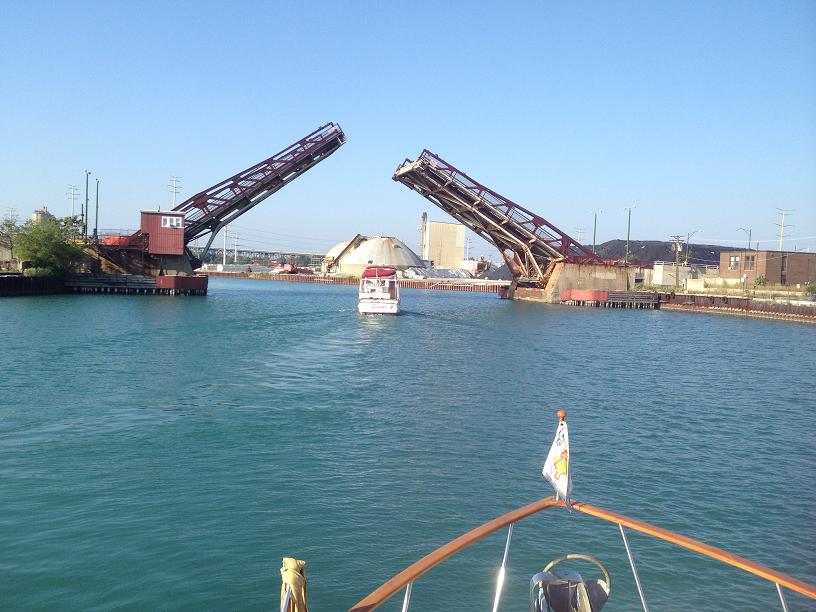
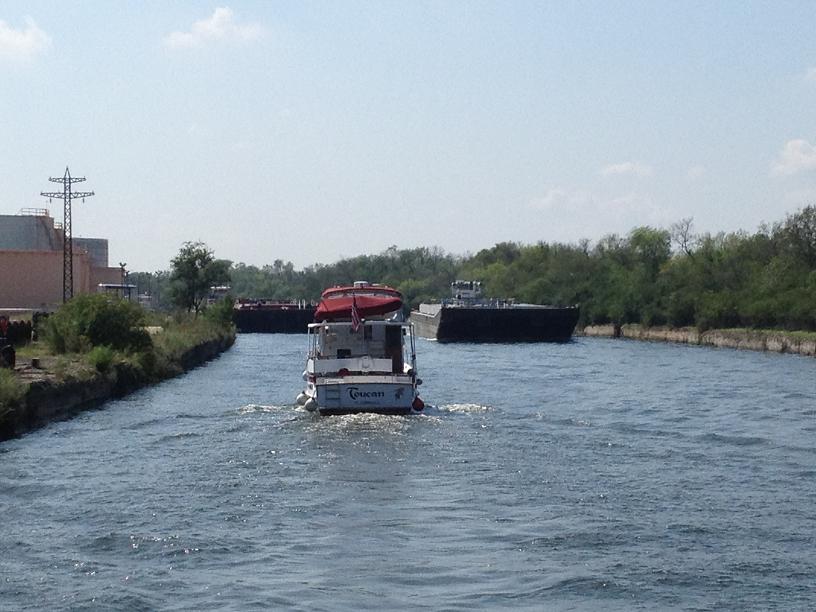
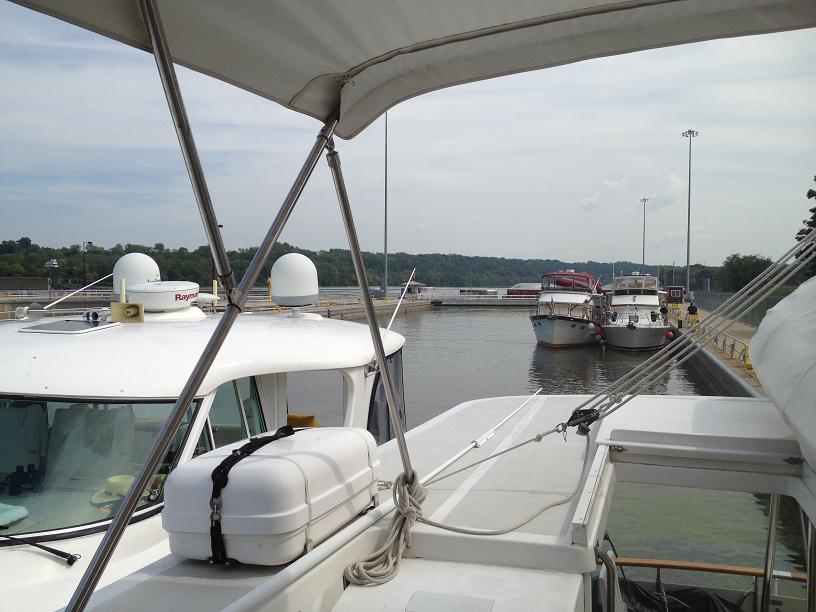
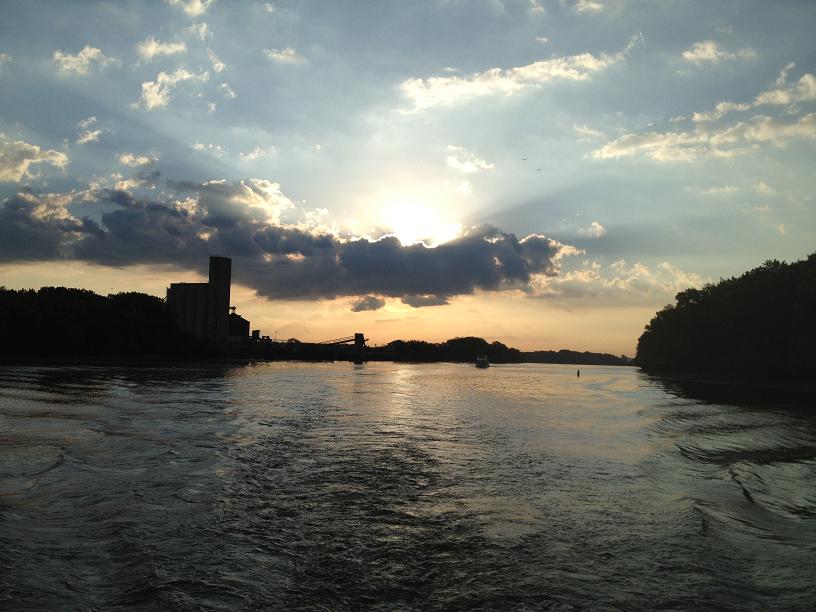
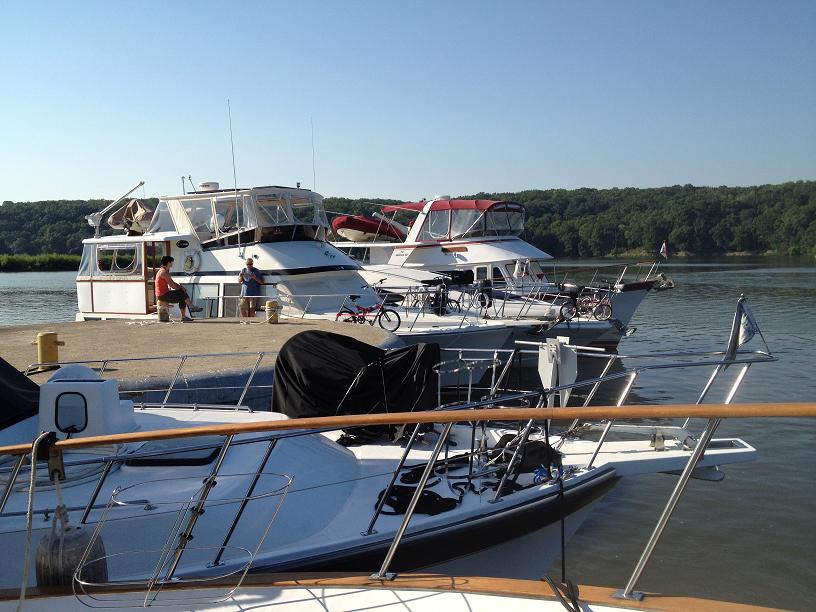
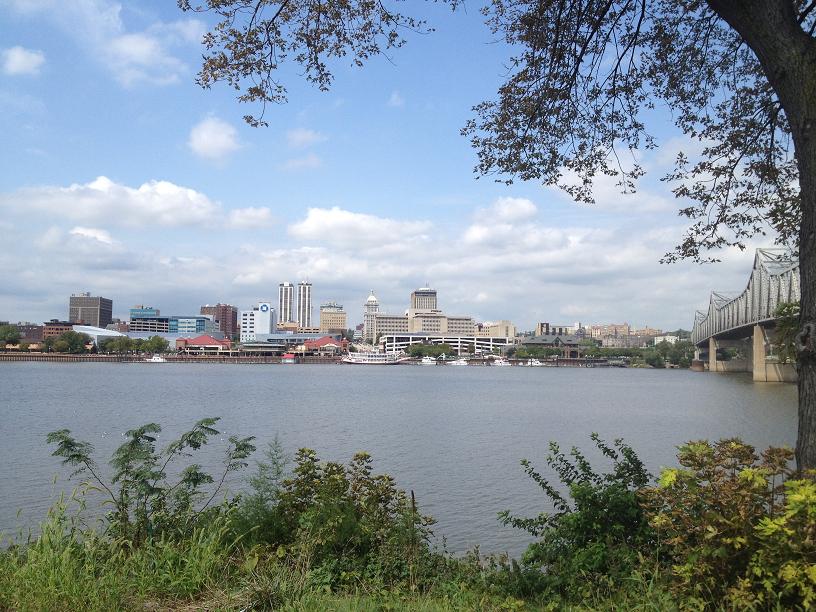
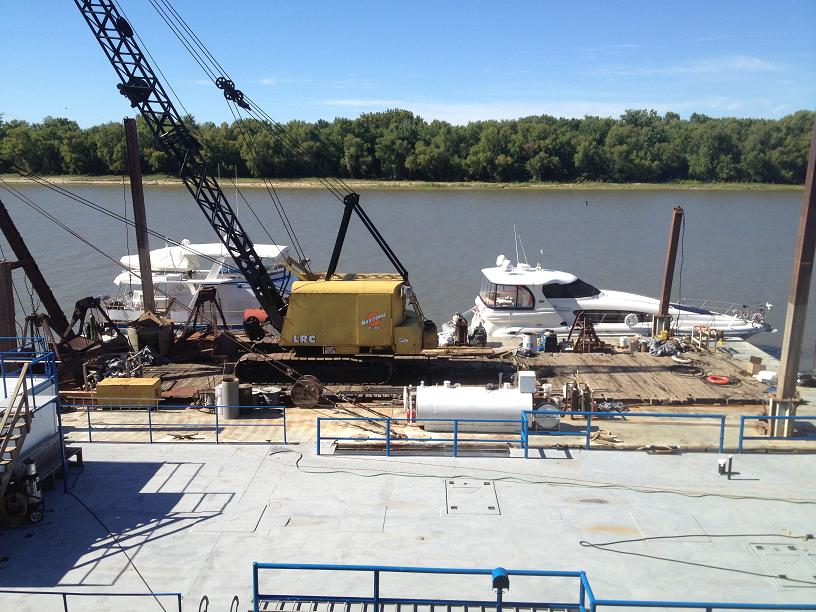
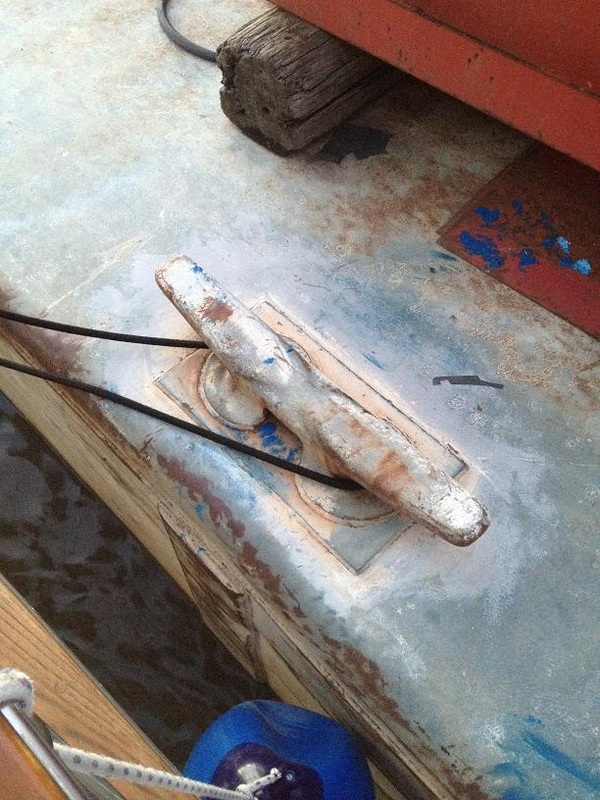
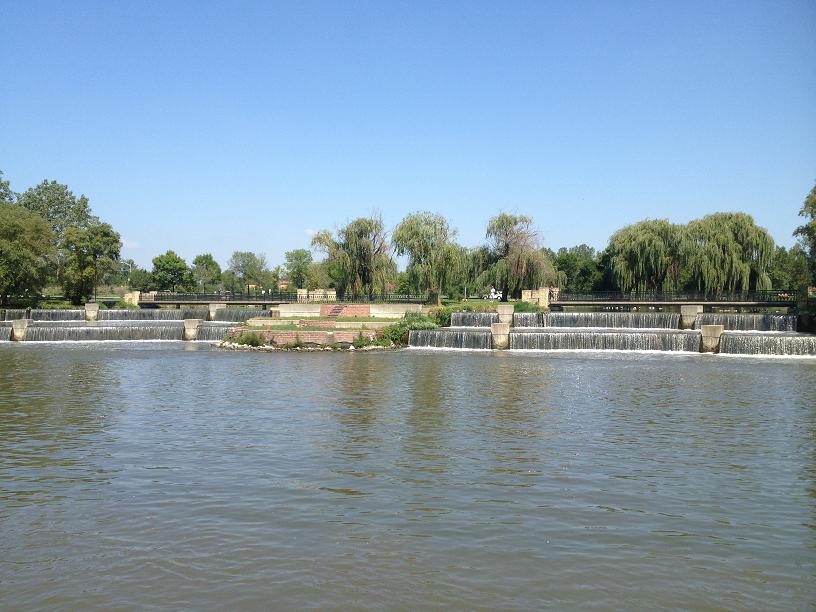
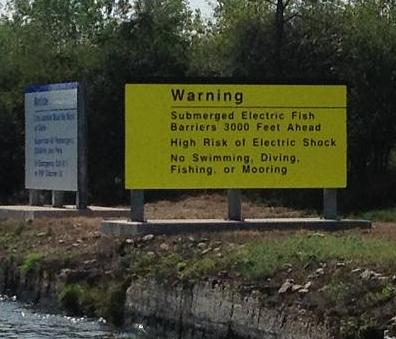
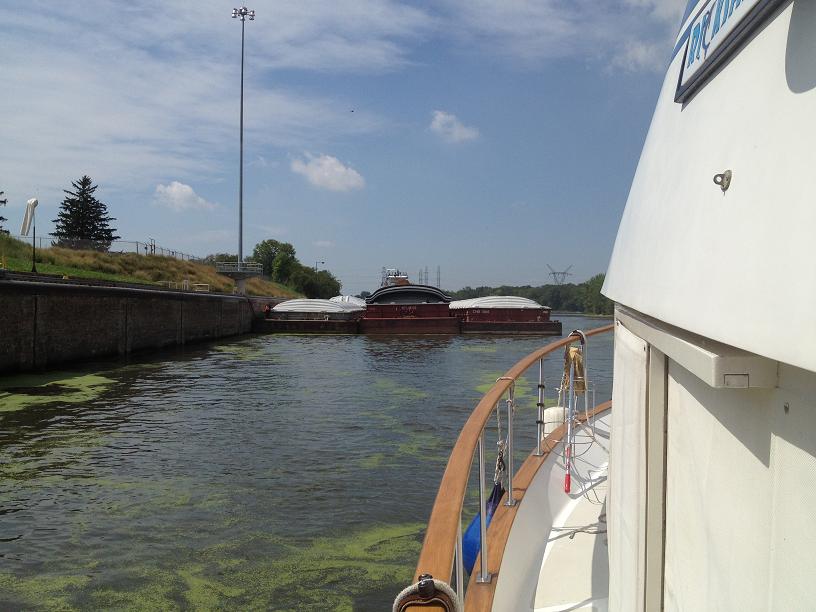
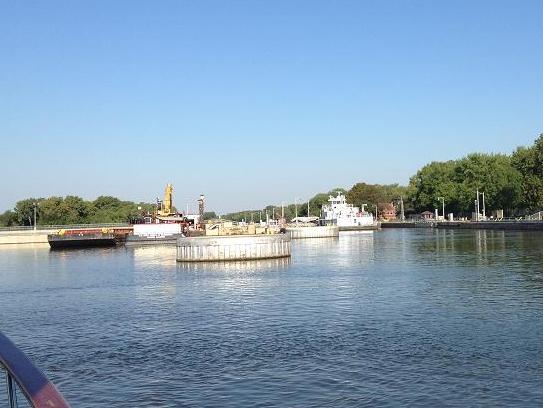

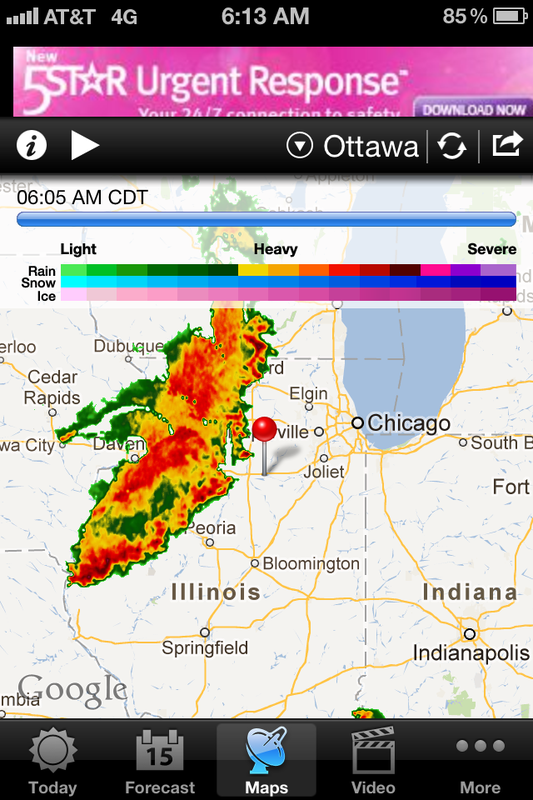
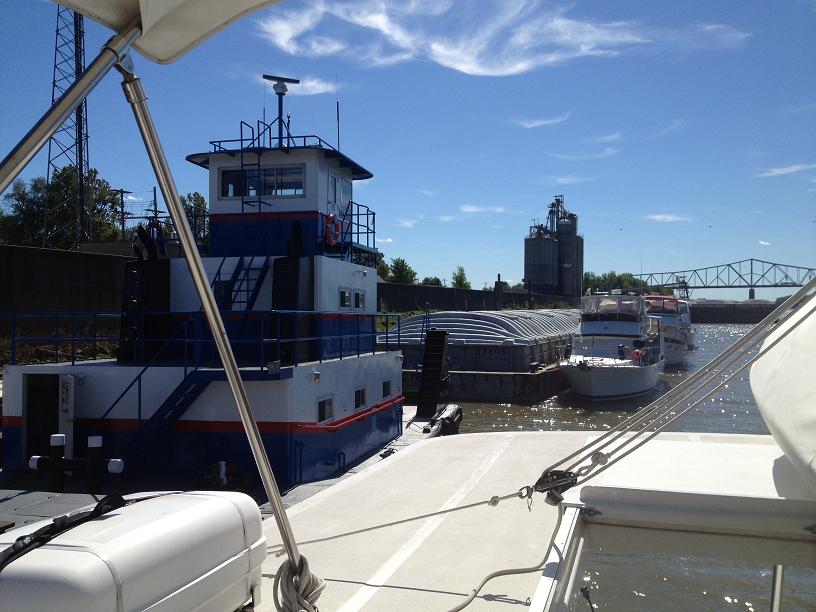
 RSS Feed
RSS Feed